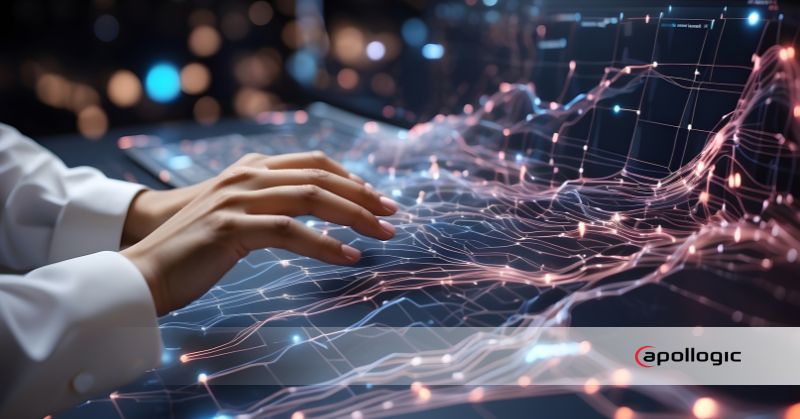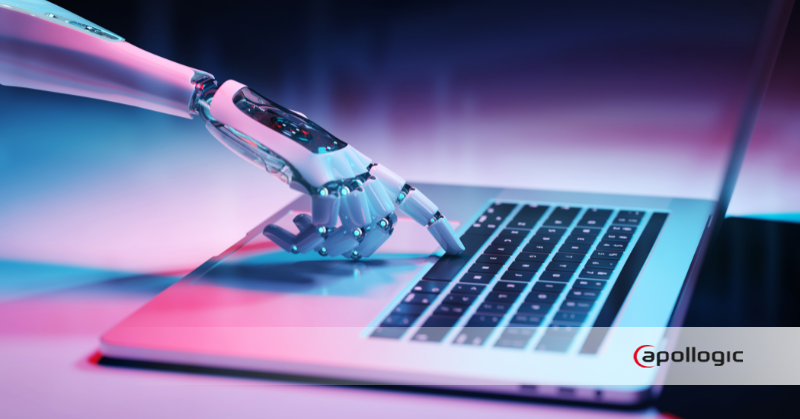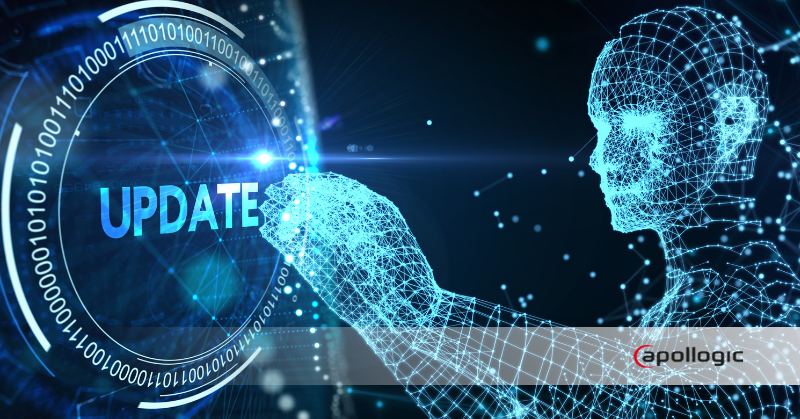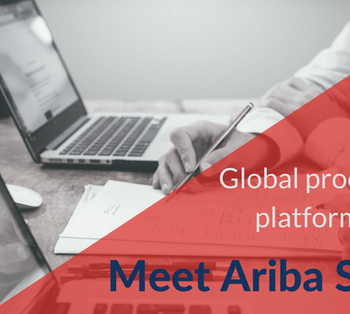4 leading SAP trends in 2018

Sylwia Zabłocka, Marketing specialist
- 30 January 2018
- Trends in SAP
- 5 min

Companies of the future – how will they look like?
Many organizations search for the answers to this question to follow global trends and win the Digital Transformation race. What are this year’s predictions? What technologies will be implemented by the global giants? We have collected for you the essential information concerning SAP trends for 2018.
Cloud 2.0
Cloud everywhere for everything is what we are likely to see over the next several years. Companies need to assess their cloud supplier’s ability to support an expanding range of use cases. If you are not in the cloud, you are isolated from innovation.
Frank Gens, IDC Senior Vice President and Chief Analyst w IDC
In recent years it was easy to notice a rapid increase in the number of companies deciding to take advantage of cloud solutions. Models of sharing cloud computing, such as Platform as a Service, have changed the attitude towards storing and processing data.
When taking advantage of a cloud, the shared resources are adjusted to specific, current needs of companies and only that space is included in the costs.

Source: „IDC Future Scape: Worldwide IT Industry 2018 Predictions”
Statistics show that companies approach such issues as the security of cloud-stored data with more trust, and focus on the advantages which these solutions offer. They include constant access, saving on supporting and maintaining servers, as well as the easiness of creating and using apps.
Phase 1.0 focuses mainly on researching and testing these elements. What will the next stage include – cloud 2.0?
In Cloud 2.0 the focus is being put more on understanding data and the methods of using them in the best possible way, to improve the processes of digitizing companies.
SAPs answer to the Cloud 2.0 trend is the SAP Cloud Platform – proof that SAP focuses on the development and with each year increases the offer of functionalities available for this solution.
It allows creating agile business apps. It offers a comprehensive developer environment and the solutions built on this platform integrate easily with company systems with the use of dedicated connectors.
The company’s offer includes now also solutions for transforming typical company systems. Their cloud equivalents include for example:
- SAP S4/HANA – an innovative ERP cloud system
- SAP Ariba – a cloud-based purchasing platform, developing and simplifying functionalities concerning managing suppliers
- SAP Hybris Cloud for Customer – a cloud shared CRM solution which ensures an increase in sales efficiency and customer service and also contributes to building long-lasting relations with clients
Furthermore, organizations focus more on architectures based on microservices. An example of such a solution is SAP Hybris Yaas – a platform which allows creating and developing apps for handling individual tasks, mainly in the field of e-commerce.
Artificial Intelligence – what are the possibilities for companies?
According to IDC’s forecasts:
- 40% of initiatives concerning Digital Transformation will take advantage of Artificial Intelligence by the year 2019,
- In 2021 75% of corporate apps will take advantage of AI, more than 90% of consumers are going to work with customer service bots, and more than 50% of new industrial robots are going to take advantage of Artificial Intelligence.
Artificial Intelligence already finds application in many aspects of life, in such fields as the health service, customer service, production, sales, or marketing. There is a broad discussion going on due to the definition of this term itself. What is AI and what is it not?
This video explains the complexity of the subject:
In its strategy SAP has divided services and products related to Artificial Intelligence into three fields:
- Apps which include financial solutions and conversational applications
- Business services such as Service Ticket Intelligence or HR services
- Functional services – sharing API, based on such technologies as image classification, topic detection, or similarity scoring
An app taking advantage of Artificial Intelligence is the SAP Cash Application. It allows for the automation of accounting processes, quickly searching through payment histories, and automatically paying invoices. It is integrating with S/4HANA – a cloud-based ERP system.
SAP has also noticed the possibility of using IBM Watson to automate purchasing processes. By combining it with the SAP Ariba purchasing system, they managed to achieve a new quality – Cognitive Procurement.
The method includes functions related to intelligently managing purchasing processes and relations with suppliers, handling requests for quotations, determining purchasing demands, and managing contracts.
Take a look at our partners with which we combine our business-technological experience and modern trends:
TheBlue.ai – Artificial Intelligence for companies:
Apoqlar – Mixed Reality in surgeries, architecture and car fleets:

Are we already entering the times of “thinking” cars, planes, companies, and many more?
More and more devices gather increasing amounts of data. Companies taking advantage of them in the best possible way will win on the market.
Internet of Things – not only factories connected
The term Internet of Things concerns devices connected to the Internet. Data gathered from them is used to create analyses and be used in practice in many fields such as sports or even fashion. IoT also finds following application in enterprises. It is used in plants, offices, or even at the operating table.
The cloud environment of the SAP Cloud Platform offers the possibility to quickly create and develop apps taking advantage of the Internet of Things. This allows connecting car fleets, resources, and anything connected to the Internet of Things.
SAP tries to simplify implementing IoT business applications. They are used to:
- have insight into data from supply networks,
- improve the security of car fleets and make logistics networks more efficient,
- have insight into market data.
An advantage of SAP solutions is their easiness regarding integrating sensor data with business data. This allows to achieve precise and accurate analytics, and make the best possible decisions based on information and not intuition.
Implementation models are flexible – apps are created, developed, and managed both in the on-premise as well as cloud models.
Furthermore, there is the possibility to integrate with external apps. A function which may be used by many enterprises is generating predictive scenarios, meaning predictions in such fields as behavior or trends (for example predicting stock shortages). This allows automation which may result in, for example, increasing user satisfaction and adjusting services to their expectations and preferences.
In turn, the SAP Connected Goods solution allows connecting, monitoring, and controlling specific devices. These may be refrigerators, coffee machines, or even vending machines. The application includes a notification function, remote monitoring, and an integration with the back-end system.
SAP Connected Goods is already used by the port of Hamburg to measure the flow of ferries, with the data being stored and processed with the use of the SAP Cloud Platform. This allowed to improve the port’s functioning and create a unified interface for contacting clients.
The solution also shows, in real time, how is the space filled with containers and allows to move them quickly if there is the need to do it. That is also one of the reasons why delivery cars are on time.
This improves traffic and allows the port to handle larger numbers of the distributed goods. It also allows avoiding traffic jams and pollution.
Blockchain
Taking advantage of the Blockchain technology is mainly discussed in the context of cryptocurrencies such as Bitcoin. It consists of storing data such as property rights or transaction reports in a decentralized and distributed manner based on the peer-to-peer architecture.
The data is registered in blocks creating a chronological chain visible for all users, which prevents manipulating that data and significantly increases the safety of information.
It turns out that this technology also finds application in business and regulated trades such as finance or law. The SAP Cloud Platform Blockchain combined with the SAP Leonardo innovation system ensures the safety of data coming from the Internet of Things devices.
This solves the problem of the accumulation of vast amounts of information from intelligent devices and transactions related to them.
Gartner predicts that 2018 will be the year of Blockchain – it is listed as one of the ten most rapidly developing technologies.
Furthermore, this solution allows automatical acceptation of generated agreements (so-called smart contracts). They may include such documents as land ownership rights, shipping letters, or loans.
Already now many companies include Blockchain in their strategies. Not only banks but also government institutions become interested in it. Thanks to taking advantage of Blockchain, companies reduce the number of middlemen such as lawyers or banks, speed up the processes which may be executed at any moment, improve security thanks to encoding, protections which are difficult to break, as well as automating payments and contracts.
In which direction are the company software trends going?
Basing on detailed research of SAP trends for the years to come, a few leading tendencies can be distinguished. What will the most innovative companies focus on?
Companies implementing in their strategies the most innovative technologies will put the stress on:
- making the most efficient use of diversified data, enriched with such sources as information from the Internet of Things devices
- security
- technological synergy to improve processes and draw the right conclusions for businesses
- automation of processes and decision-making
Want to digitize your company?
- On 30/01/2018








0 Comments